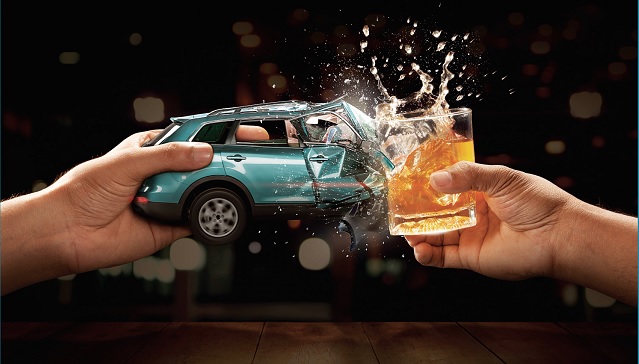
KAMPALA, UGANDA | THE INDEPENDENT | Drink driving is a major risk factor for road traffic crashes, contributing to 27% of the 20 to 50 million crash injuries every year. To appear socially responsible, the alcohol industry sponsors drink-driving mass media campaigns, but a new analysis by Vital Strategies, a global Public Health Organization that works with governments to address pressing public health challenges, reveals these efforts are largely ineffective and fail to follow best practices in road safety communication.
According to the report, rather than prioritizing public health, these industry-led campaigns serve as a marketing tool, shaping favorable perceptions of alcohol while doing little to reduce the harms of drunk driving. This is yet media campaigns have been proven to play a critical role in reducing alcohol-related road crashes when designed with strong messaging, executed effectively, and paired with other proven strategies, such as enhanced enforcement.
“The alcohol industry prioritizes profits; public health prioritizes people,” said Sandra Mullin, Senior Vice President, Policy Advocacy and Communication, Vital Strategies, in a statement shared along with the report, where they call for banning the involvement of the alcohol industry from getting involved in safety campaigns.
“To truly protect lives on our roads, governments must exclude the alcohol industry from shaping safety campaigns. Instead, they should invest in proven, public health-led communication strategies that increase awareness, shift social norms, and encourage safer behaviors. A well-executed, independent drink-driving campaign can reduce crashes by 13% and save lives.”
To do the analysis, researchers examined 32 industry-supported drink-driving video ads across 14 countries aired between 2006 and 2022 and found that alcohol consumption was portrayed in most advertisements (73.5%), either explicitly (56.3%) when alcohol is bought, held or served, or implicitly (17%).
In 61% of the ads, alcohol consumption was glamorized, linked with aspirational situations such as celebrations, social inclusion, and displays of social or financial status. Celebrities, including actors, musicians, race car drivers, and other professional athletes, appeared in nearly half (49%) of the advertisements.
Results also show that, majority of the ads, at 56%, did not demonstrate the consequences of drink driving. 87% of ads included how to avoid drink driving by using public transport or selecting a designated driver, despite evidence showing that “responsible drinking” means different things to different people and is largely ineffective.
None of the ads used tones that would evoke negative emotions or convey the consequences of drink driving, the report shows. Commenting about these findings, Irina Morozova, Director of the Road Safety Communication Program at Vital Strategies, said Industry-backed drink-driving ads just create an illusion of commitment to road safety while failing to meet effective communication standards.
“Our analysis shows that these industry-led campaigns do more to promote and normalize alcohol use than to prevent harm. Public health must come before corporate image. We need strategies that genuinely protect lives, not those designed to serve the industry’s interests.”
Studies show effective public health campaigns are grounded in research and behavior change theories. For effective drink-driving campaigns, best-practice messaging focuses on the severe consequences of impaired driving, evokes strong emotions, and links alcohol consumption to crashes. This is according to guidance developed by the World Health Organization together with the Bloomberg Philanthropies Initiative for Global Road Safety.
The researchers call for governments, transportation agencies and public health advocates to recognize the alcohol industry’s use of drink-driving advertisements as marketing tools promotes alcohol consumption rather than effectively preventing harm and therefore, they should avoid partnerships with the alcohol industry and prohibit companies from sponsoring drink-driving campaigns so that public health efforts remain independent and evidence-based.
However, many governments and NGOs collaborate with the alcohol industry due to resource constraints within public agencies. Such partnerships often come at a cost, offering short-term funding while ultimately undermining evidence-based interventions. Instead of relying on industry-led initiatives, the study encourages governments to invest in independent, proven strategies that prioritize public safety.
*****
URN
 The Independent Uganda: You get the Truth we Pay the Price
The Independent Uganda: You get the Truth we Pay the Price



